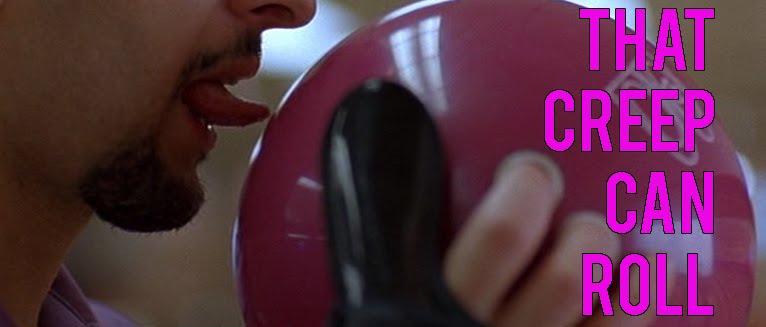

Youth In Revolt
I’m not against a good wank gag per se but when the first sound you hear in a film, over the production credits, is the sound of the lead ‘achieving completion’ it would seem the cards have been very squarely laid on the table and preconceptions are formed. I’m a big fan of Michael Cera and could happily watch him wheel out his shtick time after time. He’s got deft comic timing and there’s something in his delivery which makes even the most thoroughly average joke raise a smile. That said he’s already developed a reputation for being the go-to guy for indie-skewed teen romcoms. In what seems like a deliberate attempt to both acknowledge and subvert the introverted geeky persona he’s cultivated, the entire thrust of this film is having him change to bad boy in order to woo a girl.
Its entire dialogue and motivations are hyper-stylised in the same way that Juno was. Michael Cera’s Nick Twisp is an effete intellectual type, like a less pretentious (and prodigious) Max Fischer. What little you see of the interchanges between him and his peers is predicated on the awkwardness that derives from his more cerebral nature, such as renting “so random” fare like Fellini’s La Strada. When he meets Sheeni Saunders (Portia Doubleday) he’s in similar company and it’s nice to see such a cineliterate teen film where an exchange can be centred around Mizoguchi vs Ozu. Any film where one of the protagonists is a Serge Gainsbourg fan has me sold.
The film’s central device, which sets it apart, is the fracturing of Twisp’s persona to create a rebellious schism based on Sheeni’s predilection for an enfant terrible. It may be gimmicky but it’s undoubtedly very funny. It eschews typical depictions of unruly youngsters, instead creating the nouvelle vague-inspired François Dillinger alter-ego who sports white loafers and is rarely seen without a Gauloise hanging from his pencil-moustached lip. It could easily fall-flat but having Michael Cera acting against himself provides the film with some of its most entertaining moments.
There’s so much about this that shouldn’t work. It chucks everything it has at the screen in the hope that at least some will stick. I’d say the ‘stick’ ratio was pretty high. Chiefly, the characters’ actions never seem genuinely motivated by anything other than supplying the film with its next obstacle. At times this proves cumbersome but this slightness is something I can overlook to an extent because of the general air of artifice the film relies upon. Short animated sections are incongruous but fun. An impressive supporting cast (Steve Buscemi, Ray Liotta, Zach Galifianakis, Justin Long, M. Emmett Walsh and the fantastic Fred Willard) are largely underused but their short comic turns are welcome distractions, particularly when under the influence of psychotropic substances. The whip-smart script raises the occasional licentious moment but is generally more sweet natured than it likes to think it is.
It’s verging on insubstantial but I’d be lying if I didn’t say I laughed throughout and was hooked by its charm. I felt the same way about this as many others did (500) Days Of Summer. It relies heavily on a central convoluted conceit and it is achingly arch, but knowingly so. It plays upon this archness pushing the film to the point where it’s no longer an issue.
It may not quite be the ‘revolution’ it’s billed as but it’s inventive and droll with enough bite to overlook some of the more glaring flaws.
4/5
The September Issue
As anyone who’s met me will attest, I’m not the target audience for fashion-related media but I’d heard this was a fascinating and myth-busting peer into that world. This is a documentary focusing on Anna Wintour (elsewhere given the moniker ‘Nuclear Wintour’), editor-in-chief of American Vogue, as the magazine prepares for the publication of its prestigious September issue.
Despite trying to assuage the widely-held prejudices about the fashion industry, all this film serves to do is confirm that it seems exactly as vacuous and ridiculous as you would expect, inhabited largely by outlandish, attention-seeking figures. Sure it gives an insight into the inner-workings of a magazine and the pressures brought about by an impending deadline but it’s nothing that anyone with any nouse wouldn’t realise anyway.
Anna Wintour comes across as rude, disinterested and vile to all around her, but then I suppose that’s exactly the film’s selling point. If I didn’t know better I would think she, and others around her, were playing up to stereotypes for the film. The men are mainly preening, foppish and affected while the women are very much the dominant figures.
The odd personality does emerge from the film seeming well-rounded but I fear that’s only because the film-makers have set it up in such a way (although I was surprised at how many of the staff look anachronistic with regards to their chosen industry). Fashion editor (and former model) Grace Coddington does challenge the preconception that everyone in the industry is shallow and contemptible but the film posits her as such an obvious antithesis to Wintour that any impact is lost. It’s engineered to highlight a Grace vs Anna conflict at every available opportunity in order to give the film a lazy, but pleasing, narrative arc. This focus on their constant butting of heads seems heavy-handed and is, inevitably, neatly tied-up by the end with a handy conflict resolution piece delivered straight-to-camera.
The film as a whole is not particularly insightful and is about as inane as the industry it purports to represent. It’s entirely without a message but there’s something quite noble about that ethos. It has nothing to say and it’s not ashamed of it. Despite my instincts, I was intrigued for the most part and it did hold my attention which, for a film about something so alien and disinteresting to me, is an achievement of sorts.
2/5


No comments:
Post a Comment